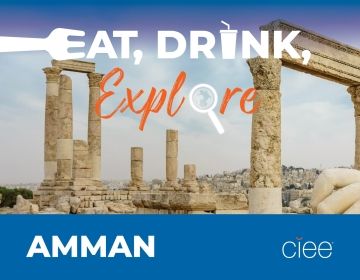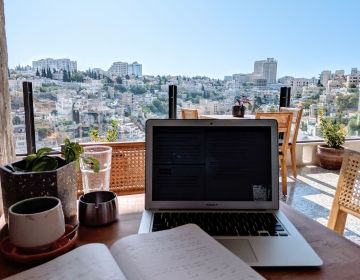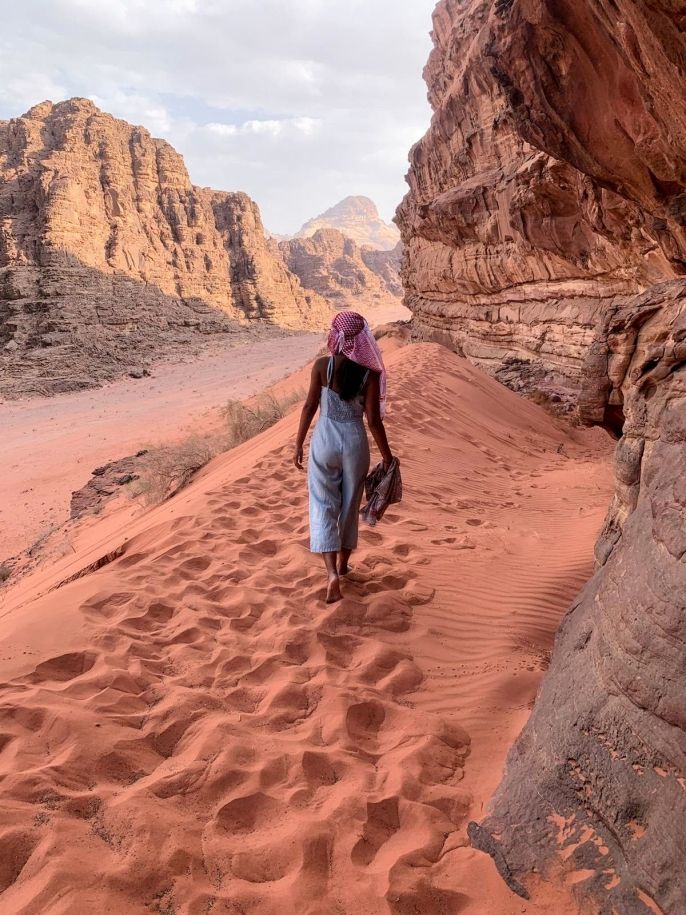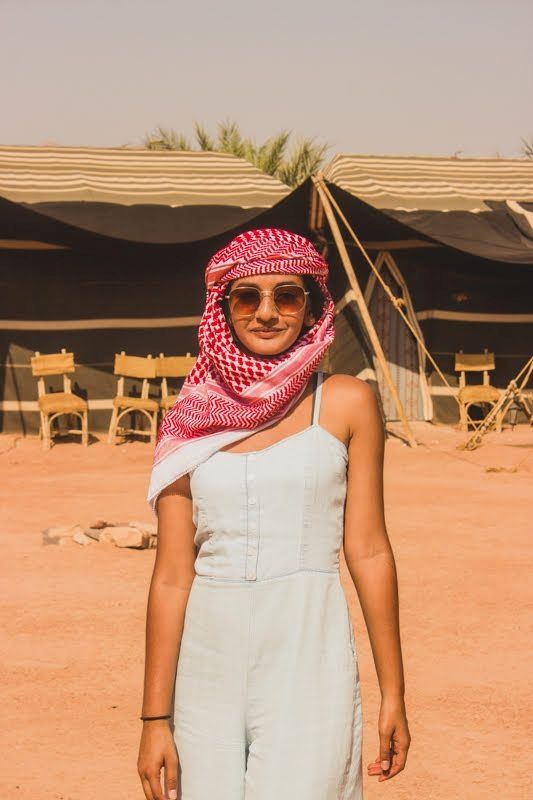The Kufiya: Wrapping up the Semester
The kufiya is a traditionally red & white or black & white scarf worn by men across the Arab world. The ghutrah, shemagh, ḥaṭṭah, or mashadah - as it’s called in different countries - has always served a functional purpose. Bedouins wear it to protect their skin from the intense heat and dust in an arid, sunny climate. But over time, the cotton scarf has adopted a political meaning as well. During the Arab revolt of the 1930s, it became a symbol of Palestinian nationalism and since then, has been worn by Arab youth around the world as a symbol of Palestinian resistance and solidarity.
This is the history that we learned before donning the kufiya at Wadi Rum and Petra. Wrapped and tied for us by Bedouin men at the Wadi Rum camp, the cotton scarf was required to protect us from sunburn and excessive heat. We begin taking selfies and pictures, and my friends are immediately concerned about the consequences of posting these pictures or even wearing the scarf back in the United States for fear of cultural appropriation.
A conversation far too important and layered to discuss in a short blog post, the issue with cultural appropriation is one we, as study abroad students, must always consider as we immerse ourselves in the host culture. Without fear of labels, we ought to fully engage in the most human way possible in our host communities and back at home, which means asking questions, understanding our privilege, letting newfound knowledge guide our perspective, and most importantly, sharing - because exchange necessarily is a two-way street.
As expats, we are neither tourists nor locals. We walk a fine line between educating and being educated, appropriating and appreciating. The clothes we wear and the words we speak are deeply tied to race, ethnicity, and nationality. But there is no definitive narrative on what kind of cultural symbolism we should bring back with us, on whether we should wear the kufiya in the States. While I cannot arbitrate where that line is drawn, I can encourage everyone, especially those about to embark on or those returning from an adventure abroad, to think about how we travel.
Related Posts

EAT, DRINK, EXPLORE: AMMAN
BEST FOOD TO EAT IN AMMAN With Israel and Egypt on one side, and Syria, Iraq, and Saudi Arabi on the other, it’s no wonder Jordan’s cuisine is so vast... keep reading
Creative Spaces
The bass vibrating in my chest, the beat controlling my arms and legs like a marionette doll, the melody and harmony changing roughly every three and a half minutes -... keep reading

Observations on University in Jordan
CIEE Amman offers us the opportunity to take a class at Princess Sumaya University of Technology. Wanting to meet Jordanians my age, I took the opportunity and signed up for... keep reading


